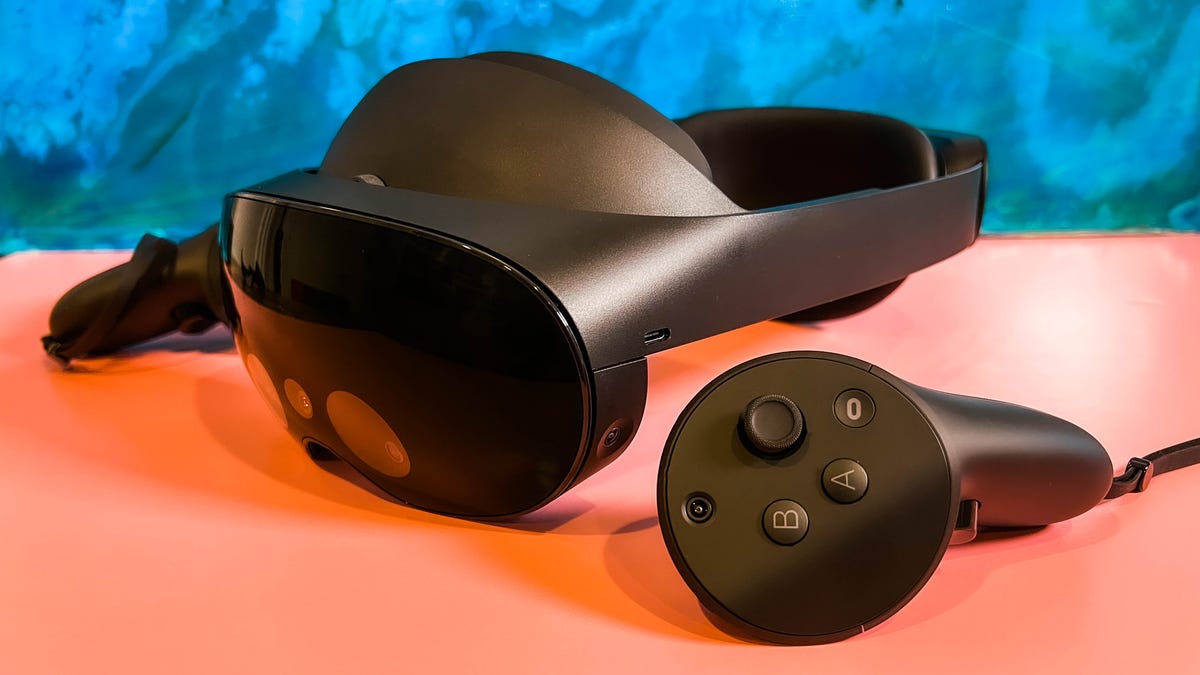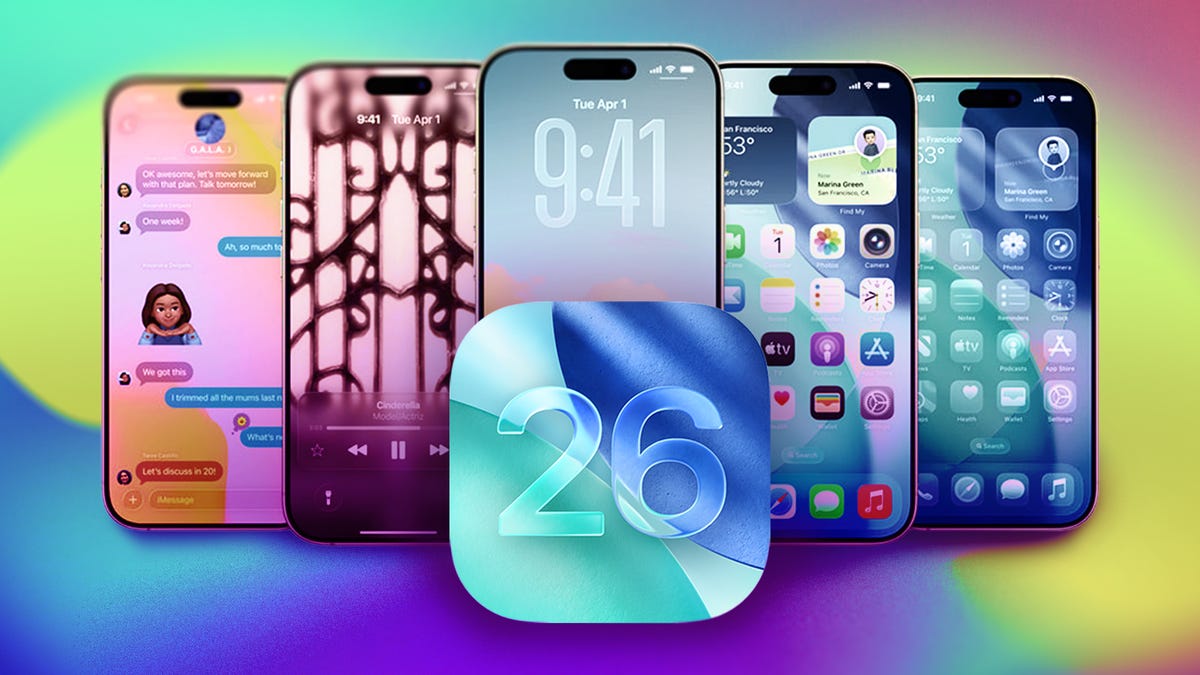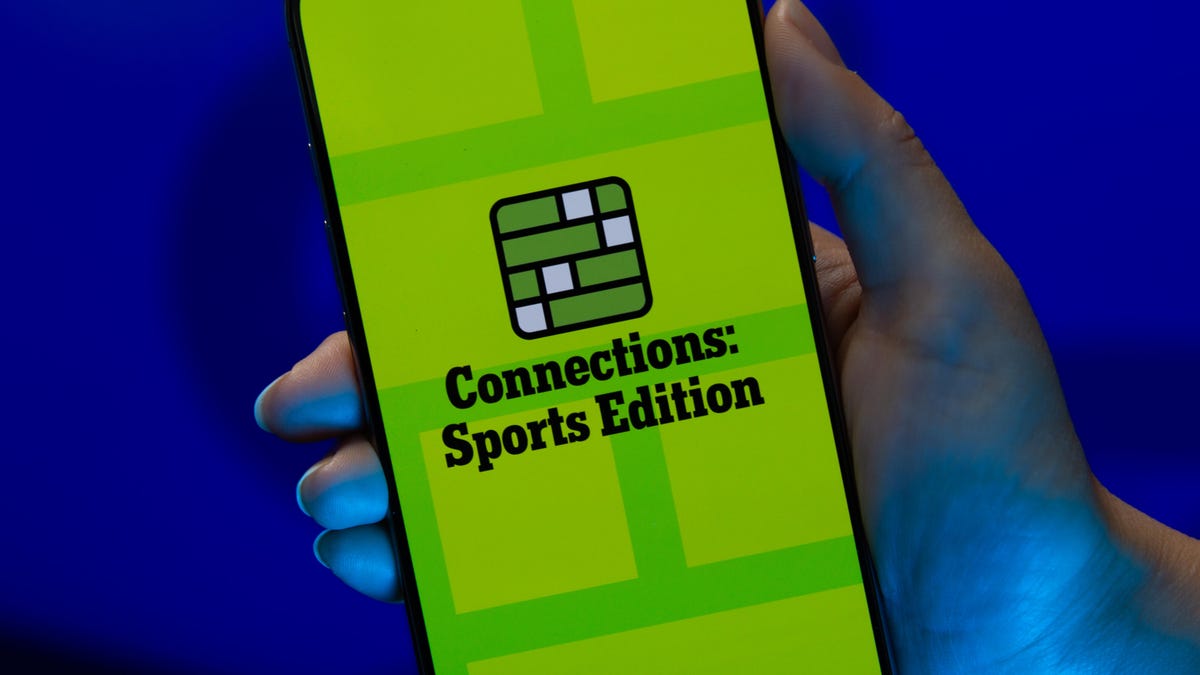Technologies
Apple Should Build Its AR on the Meta Quest
Commentary: Its glasses may be on hold, but the immediate future is already in front of us.

Apple’s first-ever VR-AR or «mixed reality» device is expected this year, and already its follow-up product seems to be on hold. According to Bloomberg’s reliable Mark Gurman, a planned set of AR glasses isn’t coming from Apple anytime soon. That’s OK: AR glasses don’t seem like they’re imminent from anyone.
After a trip to Las Vegas to try out some of the emerging technologies around future VR and AR headsets, one thing is increasingly clear: Everyone’s trying to figure out AR glasses, but everyone’s trying to perfect VR headsets. The difference between those two scenarios is bigger than you think.
All-day AR glasses that are useful, work convincingly, have long enough battery life, work with your phone and function as actually legit prescription glasses haven’t materialized, although the pieces are coming into place. Companies like Meta have promised a decade-long path to these glasses. It turns out, maybe, that’s going to be the case for everyone else, too. I’ve seen smart glasses that look real but don’t do much, or glasses with AR that feel chunky and do some things, but don’t quite work with my vision and can’t figure out how to work with my phone yet. Chipmaker Qualcomm is working on this; Google, Apple and Samsung need to solve it someday, too.
In the meantime, VR already has a very real and reasonably popular product that most families I know in the everyday world are familiar with: the Meta (formerly Oculus) Quest 2.
Read more: The Quest 2 Is Still the Best VR Headset For Now
That recognition is no small thing. I think of the Quest’s place in everyday life like the Amazon Echo was years ago: something odd that over time became familiar, normalized. Something reasonably priced, and good enough to do a few things actually well. The Quest 2 is basically a game console. Where Meta has struggled is figuring out how to expand that base beyond gamers.
Following Meta’s playbook is something I expected Apple would do. Heck, I expect most companies are going to do it. The Quest 2 works just like most people imagine it will, or better. It’s a bit of instant magic that’s totally wire-free.
The Quest 2 does have downsides. In fact, those problems emerge the more you use it. I find connecting with friends and social spaces gets weird and buggy, prone to lag, disconnects and way-too-basic avatars. The battery life is bad. For fitness apps, which the Quest 2 can do surprisingly well, it’s still not good at really managing sweat or keeping my glasses from fogging.
Even though Meta wants the Quest 2 and higher-end, work-focused Quest Pro to open up new ways to work by creating virtual monitors around my laptop, the connections and display quality aren’t good enough to be more than a clever experiment most of the time. I can see my laptop keyboard with the Quest Pro’s passthrough cameras, but typing feels awkward and nowhere near as good as when I’m just on my laptop… and I can’t see my phone screen to check messages, either. The Quest can show me phone notifications like a basic smartwatch from a decade ago, but I can’t interact with them.
These VR headsets can even do some basic AR, using passthrough cameras that «mix reality» to show the real world in fuzzier video, with VR layered on top. The effect is sometimes pretty amazing, and could even approach feelings I’ve had with early AR headsets like the Microsoft HoloLens 2.
So where does that put Apple? Clearly, there’s a headset coming soon. And according to Bloomberg’s Gurman, the next goal after this first expensive headset is to work on a more affordable model. It’s like Meta’s approach to the Quest and Quest Pro, in reverse. And there are plenty of things Apple could focus on to make its entry into VR (and AR) worth the effort.
Better comfort, better fitness
The Quest 2 is already an affordable fitness device, and pairs with watches to show heart rate and fitness stats. Apple clearly has an advantage on time spent developing the Apple Watch, fitness and health tracking, and its Fitness Plus subscription video workouts, which also have overlaid fitness stats.
Apple could emphasize workouts and fitness on its headset, with comfortable, breathable straps and face pieces that could feel better for exercise. Meta is starting to realize it needs to improve comfort for VR: A recent Razer partnership using head straps made by CPAP-maker ResMed shows a need for better materials. I’d expect Apple to make this aspect a key part of the headset’s advantages. There are other advantages, too. Apps like Beat Saber and Supernatural use music for fitness, and Apple already has all of Apple Music at its disposal.
Connect better with laptops, iPads, phones, watches
VR headsets right now have an extremely hard time working well with all the other things we have lying around us. I can’t get a Quest to connect nicely with my phone all the time. To work with my laptop, I need a specialized third-party app with its own thing I have to install on my laptop and turn on.
Meanwhile, Apple has been focusing on handoffs and continuity across AirPods, HomePods, iPhones, Apple Watches, MacBooks, Apple TVs… all over the place. That’s what’s needed to make a VR headset seem seamless and integrated into other stuff. I want to check my watch in VR, or use it to control apps. Or use my phone, and also see the phone. Suddenly grab my laptop, and the headset connects. Incoming calls? No problem. Send myself things back and forth from my phone or laptop and get all the files and things I want, and not feel like I’m on a vacation from them. That’s what Apple’s headset could set out to achieve.
That’s a best-case scenario. Much like the first Apple Watch and iPhone, the actual Day 1 functions of this headset might end up disappointing.
Better social
Even though the metaverse is on everyone’s minds, there aren’t many big social spaces in VR that work well. Microsoft’s Altspace is nice, but often feels empty. VRChat is wild, experimental, full of big features and ideas, and feels like a messy explosion that’s hard to jump into. Meta can’t get enough people into Horizon Worlds. Even when these platforms do work, for concerts or events, the limits on people who can attend at once, the lag and drop-off, not to mention the avatar limits, make it a trade-off versus any other way you could connect on a phone or laptop.
Apple may not be able to solve this any better for larger-scale experiences, but for more intimate and several-person FaceTime-like moments, Apple could make shared experiences in VR work a lot better. Meta hasn’t perfected social VR yet, and someone needs to.
Can Apple make a better controller? (Or none?)
The Quest 2 controllers are fine, but all of VR leans on the same game controller-like inputs for headsets. Apple’s headset could lean more on hand tracking, or wearable inputs like the Apple Watch. I’m curious if a more work-oriented controller or accessory can be created that makes the headset feel better for taking on apps beyond games. Meta’s working on a long-term, game-changing shift to neural input wristbands eventually, but it’s unclear whether this approach will end up succeeding.
The Quest platform has continually improved its hand tracking over the years. However, hand tracking’s reliance on particular gestures without any physical feedback is an imperfect solution right now. Maybe Apple tries hand tracking along with using an Apple Watch or the iPhone for tactile haptic feedback, or finds a smaller go-between accessory.
I’ve been trying out experimental haptic technology recently, trying to imagine how VR could think its way to new inputs. This headset feels like the biggest opportunity Apple’s ever faced to create a brand-new type of input device that could make a big impact on the landscape. If it’s done right, maybe it’ll be the input accessory that makes its future AR glasses, whenever they arrive, seem feasible.
Build out more interesting mixed reality
For all the Meta Quest Pro promises to blend AR and VR with its mixed-reality capabilities, not many apps tap into its extras yet. I’ve seen some mind-blowing demos of mixed reality in VR with the ultra-high-end Varjo XR-3 connected to a PC, which at least showed me ways that a VR headset could begin to feel like a portal interconnected to my own home reality. Apple could start experimenting with more engaging AR moments in a high-end VR headset, and at least get the ball rolling on things that work in advance of whenever its AR glasses are ready, years from now.
Smaller sessions in VR may make more sense right now
VR is a thing I don’t use all the time, and that’s true for most people. Maybe that’s exactly where Apple should start. It’s not a given we’ll want to wear AR glasses everywhere, or even what those glasses would be good for. In the meantime, a VR headset at home that’s meant to be worn sometimes, but not all the time, is the place most of us feel safest to start. It’s why the Quest is something people actually use.
It’s also a way to avoid dealing with questions of accommodating true prescription vision needs in everyday glasses, something no one’s succeeded in tackling, either. VR headsets sometimes need prescription inserts, but many just fit right over the glasses we already have. I prefer the easy-fit solution: I don’t need to make VR a thing I spend a whole day in. I’ll settle for a truly useful hour or two, and if Apple can make that hour or two even better than what we have now, that’s a big enough step forward for me.
Editor’s note, Jan. 20: Adds mention of Meta’s hand tracking for the Quest.
Technologies
AI Notification Summaries Come Back to iPhone News Apps, but With a Warning
Apple disabled these summaries for most of 2025.

Apple brought AI notification summaries for news and entertainment apps back to Apple Intelligence-enabled iPhones when the company released iOS 26 in September. Apple disabled these summaries in early 2025 after the BBC pointed out in December 2024 that the feature twisted the media organization’s notifications and displayed inaccurate information.
What’s different now about these summaries is that your device’s settings warn you that the summaries might be inaccurate. Your device will also note that you should verify the information in these summaries, and the best way I can think of to do this is to tap into the notification and read the story. This might defeat the purpose of the summaries for some people, but it could also ensure people read past a headline.
Here’s what to know about those AI summaries and the new warning.
Don’t miss any of our unbiased tech content and lab-based reviews. Add CNET as a preferred Google source.
iOS 26 warns about summary inaccuracies
When I updated to iOS 26, I was greeted by some splash screens asking for various permissions. One splash screen was for the AI notification summaries. When you see this screen, you have two options: Choose Notifications to Summarize or Not Now. If you tap Not Now, the splash screen goes away.
If you tap Choose Notifications to Summarize, you’re taken to a new page where you’ll see three categories: News & Entertainment, Communication & Social and All Other Apps. Tapping one of these categories allows notification summaries for apps in that category. Beneath the News & Entertainment category, there’s a warning that gets outlined in red if you tap it.
«Summarization may change the meaning of the original headline,» the warning reads, adding, «Verify information.»
There’s also a warning across the bottom of the screen that reads, «This is a beta feature. Summaries may contain errors.»
After tapping the categories you want, tap Summarize Selected Notifications across the bottom of your screen. If you selected all the categories, this button will read Summarize All Notifications.
And if you don’t want these summaries, you can tap Do Not Summarize Notifications. If you allow these summaries and don’t like them, you can easily turn them off. Here’s how.
How to turn off AI notification summaries
1. Tap Settings.
2. Tap Notifications.
3. Tap Summarize Notifications.
4. Tap the Summarize Notifications toggle in the new menu.
You can also follow the above steps to turn AI notification summaries back on. You’ll have to select which categories you want these summaries for again, too.
For more iOS news, here’s what to know about iOS 26.2 and what was included in iOS 26.1. You can also check out our iOS 26 cheat sheet for other tips and tricks.
Technologies
Today’s NYT Connections: Sports Edition Hints and Answers for Jan. 7, #471
Here are hints and the answers for the NYT Connections: Sports Edition puzzle for Jan. 7, No. 471.

Looking for the most recent regular Connections answers? Click here for today’s Connections hints, as well as our daily answers and hints for The New York Times Mini Crossword, Wordle and Strands puzzles.
Today’s Connections: Sports Edition is a bit tricky. The blue category was a real stumper for me, though I found the purple group easy today for a change. If you’re struggling with today’s puzzle but still want to solve it, read on for hints and the answers.
Connections: Sports Edition is published by The Athletic, the subscription-based sports journalism site owned by The Times. It doesn’t appear in the NYT Games app, but it does in The Athletic app. Or you can play it for free online.
Read more: NYT Connections: Sports Edition Puzzle Comes Out of Beta
Hints for today’s Connections: Sports Edition groups
Here are four hints for the groupings in today’s Connections: Sports Edition puzzle, ranked from the easiest yellow group to the tough (and sometimes bizarre) purple group.
Yellow group hint: On the ice.
Green group hint: Run and jump.
Blue group hint: Baseball bosses.
Purple group hint: Golden State schools.
Answers for today’s Connections: Sports Edition groups
Yellow group: NHL teams with singular nicknames
Green group: A bit of track and field equipment.
Blue group: MLB managers.
Purple group: Mascots for University of California schools in the singular.
Read more: Wordle Cheat Sheet: Here Are the Most Popular Letters Used in English Words
What are today’s Connections: Sports Edition answers?
Don’t miss any of our unbiased tech content and lab-based reviews. Add CNET as a preferred Google source.
The yellow words in today’s Connections
The theme is NHL teams with singular nicknames. The four answers are Avalanche, Kraken, Lightning and Mammoth.
The green words in today’s Connections
The theme is a bit of track and field equipment. The four answers are baton, hurdle, javelin and pole.
The blue words in today’s Connections
The theme is MLB managers. The four answers are Cash, Counsell, Marmol and Vogt.
The purple words in today’s Connections
The theme is mascots for University of California schools, in the singular. The four answers are Banana Slug, Bruin, Gaucho and Golden Bear.
Technologies
Yes, This Swimming RoboTurtle Is Adorable. It Also Has an Important Environmental Mission
Beatbot is best known for making pool-cleaning robots, but it was its swimming robot turtle that won our hearts at CES 2026.

Few things in life have made me feel more privileged and awestruck than the opportunity to swim with sea turtles in their natural environment. The way in which these gentle creatures navigate through their underwater world with their deliberate and careful fin strokes is utterly mesmerizing to watch.
It’s a distinctive style of movement — so much so that when I saw Beatbot’s RoboTurtle swim across a water tank on the show floor at CES 2026, I knew that this wasn’t simply just a pool cleaner robot with turtle features tacked on. This was a studied example of biomimicry in action.
The reason for this is that the company’s engineers went on a two-month expedition to study sea turtles in their natural environment, Beatbot’s Eduardo Campo told me as we watched Turtini (the team’s affectionate nickname for RoboTurtle) splash around in its pool. «We did a lot of motion capture, like the things they use in movies, because we need to develop those joints that it has,» he said.
This isn’t RoboTurtle’s first time at CES — it also appeared in 2025 as a static concept. This is the year, however, it’s found its fins, so to speak. Not only can it swim, but it can also respond to hand gestures: I throw it an OK gesture, and it dances in response. But as cute and limber as it is, RoboTurtle is a robot with an important mission.
RoboTurtle is an environmental research tool, built with input from researchers and NGOs, which can go where humans or other machines cannot for fear of disturbing complex and delicate underwater ecosystems, particularly coral reefs. It can move silently and naturally in a way that won’t scare wildlife, monitoring water quality and fish numbers with its built-in camera.
«One of the groups that we’re working with, they want to study the coral reefs in near Indonesia,» said Campo. «There was a very big incident over there with a boat that came up onto a coral reef and it disrupted the environment, [so] they want the least intrusive robot possible.»
The group wants to deploy RoboTurtle for certain periods every year to monitor the recovery of the coral and monitor the fish population, he added. Beatbot is currently training the built-in AI to give RoboTurtle monitoring and recognition skills.
At CES, I watched RoboTurtle paddle about only on the surface of the pool, but it can also dive down up to five meters. However, it needs to resurface to send data and its GPS signal back to base, much like a real turtle that needs to come to the surface to breathe. This also gives it a chance to recharge via the solar panel on its back.
Even though I was impressed with RoboTurtle’s swimming ability, Campo estimates that the Beatbot team is still a year and a half away from perfecting its technique, with the robot ready for full deployment in between three to five years.
CES 2026 is a show where tech with a real purpose feels scarce, so it sure is refreshing to see a company use its expertise to build something designed with a sustainable future in mind. It might be a while until we see RoboTurtle take to the seas, but I’m glad that I got to witness it at this stage of its journey.
-

 Technologies3 года ago
Technologies3 года agoTech Companies Need to Be Held Accountable for Security, Experts Say
-

 Technologies3 года ago
Technologies3 года agoBest Handheld Game Console in 2023
-

 Technologies3 года ago
Technologies3 года agoTighten Up Your VR Game With the Best Head Straps for Quest 2
-

 Technologies4 года ago
Technologies4 года agoBlack Friday 2021: The best deals on TVs, headphones, kitchenware, and more
-

 Technologies4 года ago
Technologies4 года agoVerum, Wickr and Threema: next generation secured messengers
-

 Technologies4 года ago
Technologies4 года agoGoogle to require vaccinations as Silicon Valley rethinks return-to-office policies
-

 Technologies4 года ago
Technologies4 года agoOlivia Harlan Dekker for Verum Messenger
-

 Technologies4 года ago
Technologies4 года agoiPhone 13 event: How to watch Apple’s big announcement tomorrow
